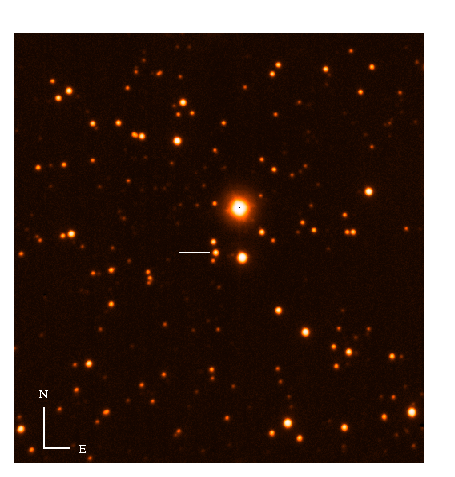RX J1914+24: The shortest period binary?
RX J1914+24 was discovered during the ROSAT all sky survey. Initial
observations suggested that it was probably a
cataclysmic variable - a binary system in which matter is
transfered from a star similar to our Sun (the secondary star) and
onto a white dwarf (the primary). At MSSL we obtained followup ROSAT
observations of RX J1914+24 and concluded that the secondary star is
also a white dwarf. In other words we suggested the system was a
double degenerate binary, where both the primary and secondary stars
are white dwarfs. If we are correct in our interpretation the period
of the binary system is 9.5 mins - the shortest known period of any
stellar binary system.
Recently as part of our followup, we have obtained a series of
infrared images (J band) which were taken by Kaz Sekiguchi (as in
shown below) using the 8m
SUBARU telescope in Hawaii. This is the
image made from all the 5 sec exposures and totals around 1hr of
data. Cool or what! The position of RX J1914+24 is marked by an
arrow. This image is probably one of the deepest ever
images obtained in the J band. Even in the reproduction below many
faint sources are visible - probably very faint stars or distant
galaxies.

You can get more detailed information on RX J1914+24 from our
Galactic Homepage
This page was compiled by Gavin Ramsay (gtbr@mssl.ucl.ac.uk)
and last up dated on 1 Nov 1999.

